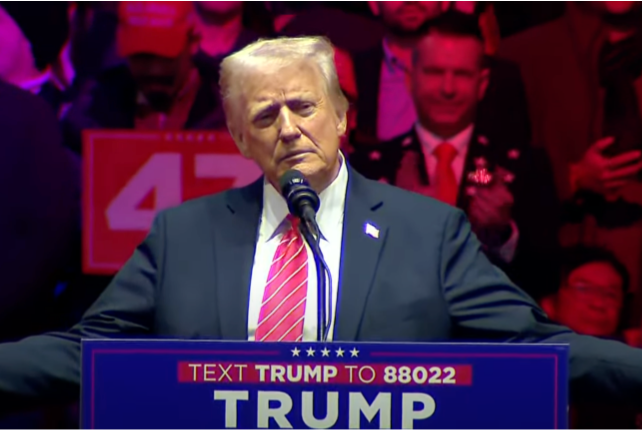Breaking News
Thanks to a Promise of An Executive Order, TikTok Is Back Online Less Than a Day After Going Dark

TikTok is back in the United States! After a brief nationwide ban, the popular video-sharing platform was restored, following a decisive executive order from President-elect Donald Trump. This move sparked widespread discussion about the app’s future, the legal challenges it faces, and the implications of a presidential intervention.
TikTok Is Back: A Temporary Respite?
On January 19, 2025, TikTok is back to U.S. users after a 14-hour blackout. The app had gone offline due to a federal law requiring its parent company, ByteDance, to divest its U.S. operations. Trump announced at a pre-inauguration rally that he would delay the ban, giving ByteDance 90 days to sell the app or reach a deal that secures TikTok's presence in America.
Trump’s intervention drew attention to the growing influence of social media platforms in politics and national security. “We have no choice. We have to save it,” Trump said, framing TikTok is back as a victory for his administration. The app greeted users with a message of thanks to Trump, further cementing his role in its revival.
From Ban to Support: Trump’s Shift on TikTok
During his first presidential term, Trump spearheaded efforts to ban TikTok, citing national security risks due to its ties to China-based ByteDance. He issued executive orders targeting the platform and pushed for its sale to an American company. However, courts blocked these attempts, and the app continued to operate.
Fast forward to 2025, Trump’s perspective has shifted dramatically. Now, he views TikTok as a platform with immense political and economic potential. Analysts believe this change stems from his recognition of TikTok's popularity among younger Americans—a demographic that played a crucial role in his recent electoral success. By keeping TikTok operational, Trump also strengthens his influence over the app to potentially shape its policies and content to align with his administration's goals.
TikTok Is Back, But Legal and Political Complexities Remain
While the executive order delays the ban, it has raised legal questions. Critics argue that Trump’s authority to override a law passed by Congress is uncertain, particularly since the Supreme Court upheld the ban just days earlier. Nonetheless, the app’s return highlights the intricate relationship between technology, politics, and global trade.
TikTok’s fate also underscores tensions between the U.S. and China. Lawmakers on both sides of the aisle have expressed concerns about the platform’s potential to compromise national security, citing its parent company’s ties to the Chinese government. Senator Tom Cotton warned of liability risks for companies supporting TikTok, reflecting the high stakes of this geopolitical dispute.
What’s Next for TikTok?
TikTok’s return is a temporary reprieve, but the platform's long-term future remains uncertain. ByteDance must either divest or create a joint venture with significant U.S. ownership to comply with federal law. Trump proposed a deal that would give the U.S. a 50% stake in the app, but details remain unclear. The app’s availability on digital storefronts is another hurdle. TikTok is currently inaccessible on Apple’s App Store and Google Play, which limits new downloads. Without regular updates, the app may face performance and security issues that can affect user experience and retention.
Additionally, public sentiment could shape TikTok’s trajectory. The app’s shutdown served as a stark reminder of its popularity, particularly among younger users. Some creators, however, are diversifying their platforms as they become wary of TikTok's unpredictability.
TikTok Is Back, But Is It For Good?
For TikTok to regain stability in the U.S., a multi-faceted approach is essential. First, ByteDance must finalize a deal that satisfies both U.S. regulators and the Chinese government. Transparency regarding data security and algorithm integrity will be crucial to rebuilding trust.
Second, the app must address the challenges of re-establishing itself on app stores. Partnerships with tech giants like Apple and Google will be vital to ensuring seamless access and functionality. Lastly, TikTok’s leadership must navigate the political landscape carefully. By engaging with lawmakers and addressing national security concerns, the platform can position itself as a valuable asset rather than a potential threat.
What do you think about TikTok’s return to the U.S.? Tell us what you think!
